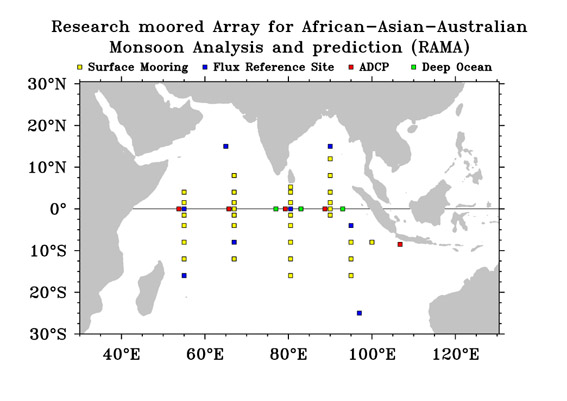
| Buoy array | Return |
CLIVAR (Climate Variability and Predictability)/GOOS (Global Ocean Observing System) IOP (Indian Ocean Panel established a plan for sustained observation over the Indian Ocean. The established observing system is referred to as the Indian Ocean Observing System (IndOOS). The moored buoy components of IndOOS is RAMA (Research moored Array for African-Asia-Australian Monsoon Analysis and prediction). The RAMA array consists of 47 mooring buoys (Fig. 1). The RAMA array is intended to cover the major regions of ocean-atmosphere interaction in the tropical Indian Ocean. These regions include equatorial waveguide, the Arabian Sea, the Bay of Bengal, and the poles of Indian Ocean dipole mode.
The each buoy measures temperature, salinity, mixed layer currents and basic meteorological variables. The measured variables by the RAMA array is essential for understanding the role of ocean in variability related to the Madden-Julian Oscillation and other intraseasonal atmospheric phenomena, for understanding ocean dynamics related to thermocline variation, and understanding interactions between the ocean and atmosphere.
To initiate a promotion of GEOSS (Global Earth observation System of Systems), we will deploy three buoys in the eastern Indian Ocean. The our sites include the eastern pole of the Indian Ocean dipole mode.

Fig. 1: The RAMA array established by CLIVAR/GOOS IOP
